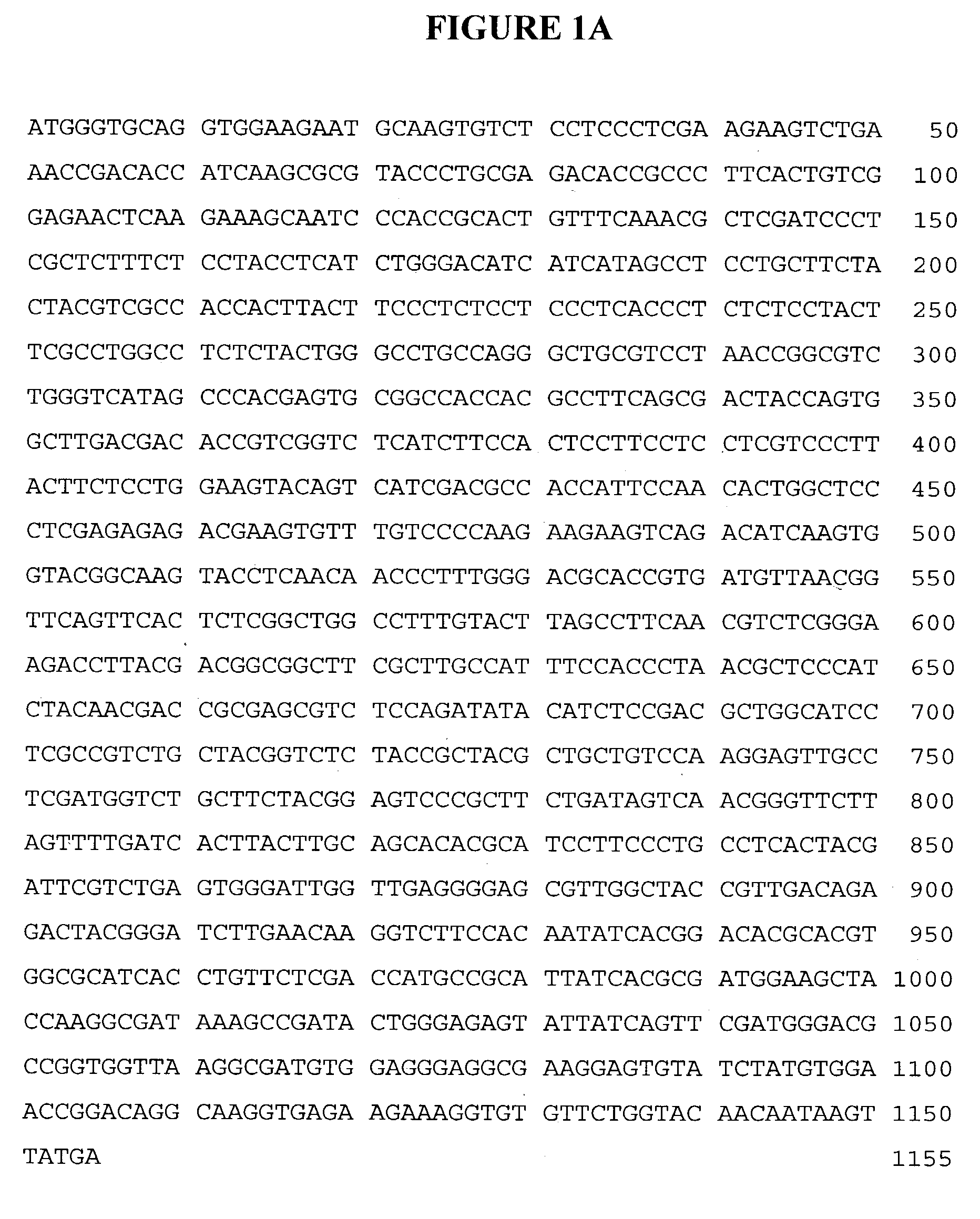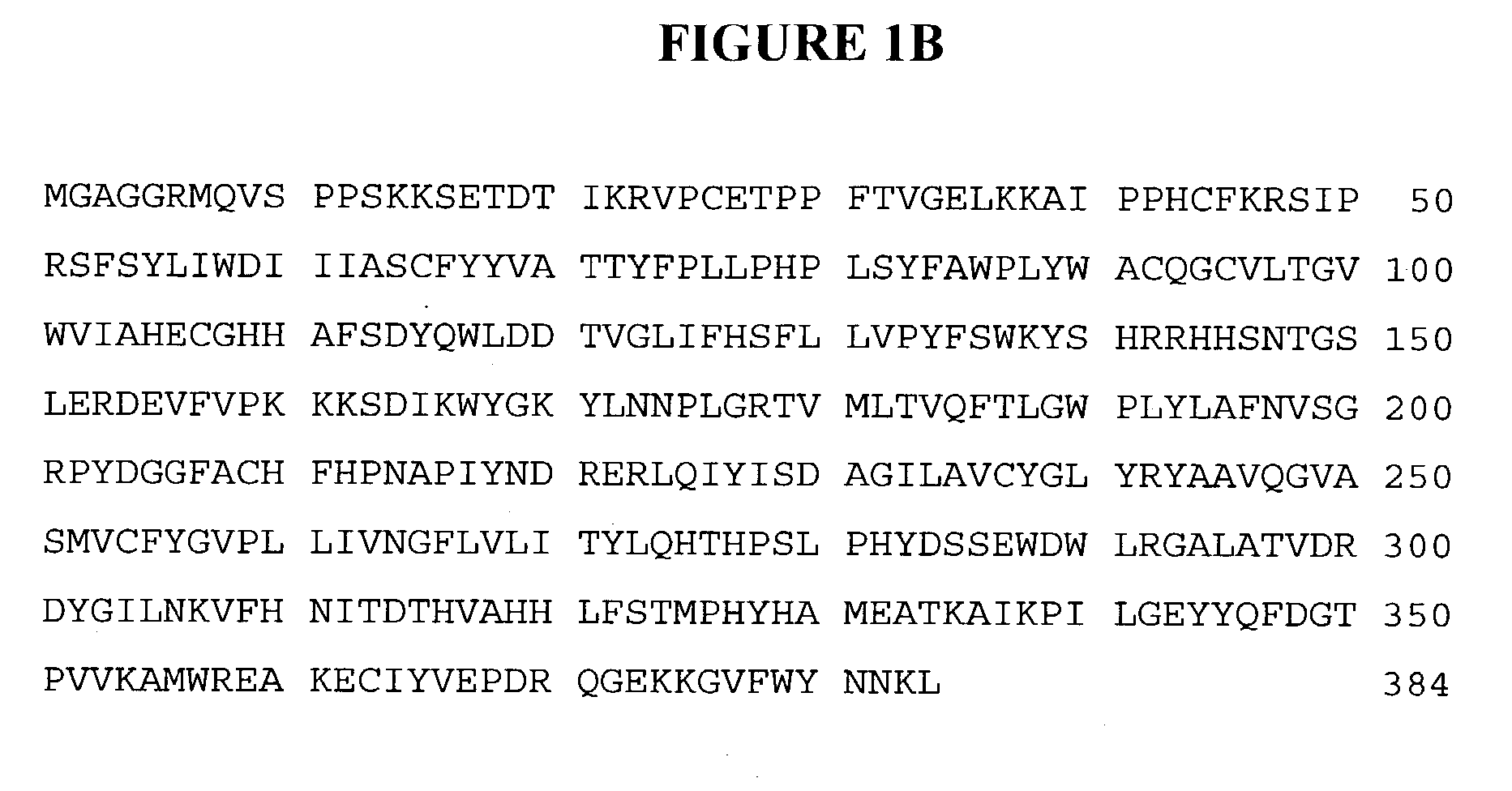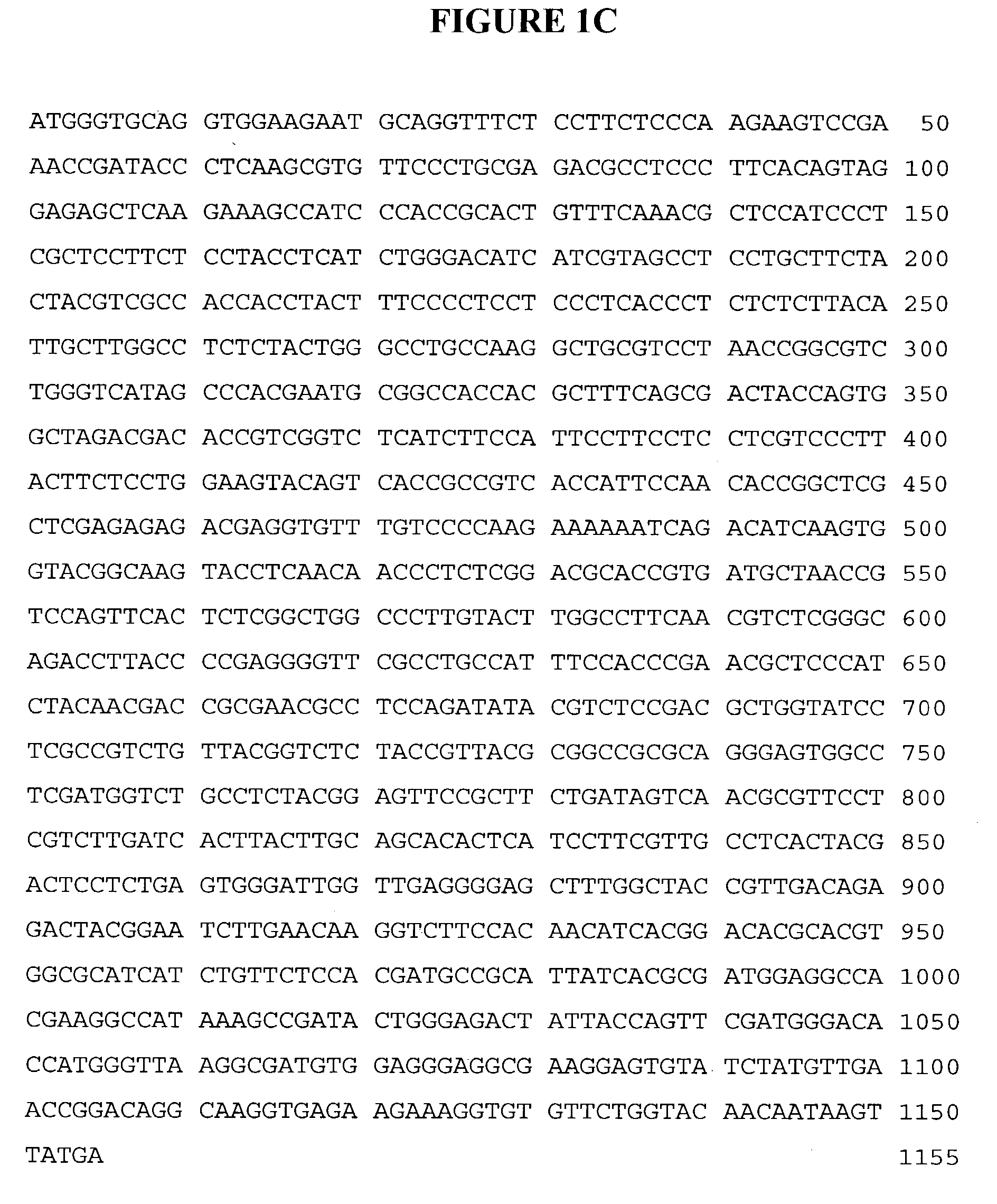Plant FAD2 coding sequence balancing for fatty acid profiling in edible oils
a technology of fatty acid profiling and plant coding sequence, applied in the field of plant fad2, can solve the problems of reducing the usefulness of the approach in efficiently generating new varieties, b. juncea is generally thought to have a less desirable fatty acid profile, and the relative unpredictability of cosuppression and antisense approaches, so as to achieve the effect of high oleic acid content and altered fatty acid profile of edible oils derived from oil seeds
- Summary
- Abstract
- Description
- Claims
- Application Information
AI Technical Summary
Benefits of technology
Problems solved by technology
Method used
Image
Examples
example 1
[0053] Fatty Acid Profile Analysis of B. juncea Seeds
[0054] One perceived disadvantage of the low erucic acid B. juncea is that it contains only .about.45% oleic acid in its seed oil compared to 60% oleic acid in canola oils. Using the low erucic acid B. juncea as starting material (WTBJ) a mutant line was selected that showed canola quality fatty acid profile (CQBJ). Crosses were made between the WTBJ and the CQBJ. F1-derived doubled haploid (DH) populations were produced. Fatty acid analysis of the self-pollinated seeds produced from the DH plants indicated that the modification of fatty acid profile is inherited as a single gene (Potts and Males, Proceedings of the .sub.10th International Rapeseed Congress. 1999, Canberra, Australia, CD-ROM; U.S. Pat. No. 0,630,3849).
[0055] For fatty acid analysis, 20 seeds from each self-pollinated DH line were homogenized in 2 ml of 0.5 N sodium methoxide in methanol and 1 ml of hexane that contained 500 ug of tripentadecanoin (TAG, G-15:0; Sig...
example 2
[0058] Cloning and Sequence Analysis of the FAD2 Genes from B. juncea
[0059] To identify and characterize the allelic variations between WTBJ and CQBJ, two breeding lines were chosen for gene cloning and characterization. Line J92D-1356 was used as a WTBJ and line J96D-0899 was used as a CQBJ. Both lines were obtained through doubled haploid technique and are therefore homozygous in their genotype background. Self-pollinated seeds from each line were grown in a greenhouse under the conditions of 25.degree. C. with light for 16 h and 20.degree. C. without light for 8 hr. Young leaves were collected for DNA isolation and siliques at various developing stages were collected for isolation of total RNA. Developing siliques were collected 1, 2, 3 and 4 weeks after flowering and were designated stages I, II, III and IV, respectively.
[0060] The BjFAD2 genes were cloned by reverse transcriptase-polymerase chain reaction (RT-PCR). This would allow us to clone only the expressed members of the ...
example 3
[0063] Comparison of BjFAD2 Gene Expression Between WTBJ and CQBJ
[0064] Sequence analysis of the cloned RT-PCR products indicated that both BjFAD2-a and BjFAD2-b are expressed in WTBJ, whereas only the BjFAD2-a is expressed in CQBJ. To confirm that this result is not due to selection of colonies by chance, we performed restriction enzyme digestion of RT-PCR products. For this purpose, RT-PCR was performed using total RNA isolated from 4 stages of developing siliques of both WTBJ and CQBJ. Amplified cDNAs were then digested by NotI restriction enzyme and separated on 1% agarose gel by electrophoresis. Because BjFAD2-b cDNA contains a NotI site, it will be cut into two fragments of 730 bp and 425 bp. BjFAD2-a cDNA, however, does not contain a NotI site and therefore will not be cut by NotI restriction enzyme. The results are shown in FIG. 3. As we expected, the cDNAs from WTBJ generated 3 bands after NotI digestion, indicating the expression of both BjFAD2-a and BjFAD2-b in these deve...
PUM
| Property | Measurement | Unit |
|---|---|---|
| thermal melting point | aaaaa | aaaaa |
| temperatures | aaaaa | aaaaa |
| temperatures | aaaaa | aaaaa |
Abstract
Description
Claims
Application Information
 Login to View More
Login to View More - R&D
- Intellectual Property
- Life Sciences
- Materials
- Tech Scout
- Unparalleled Data Quality
- Higher Quality Content
- 60% Fewer Hallucinations
Browse by: Latest US Patents, China's latest patents, Technical Efficacy Thesaurus, Application Domain, Technology Topic, Popular Technical Reports.
© 2025 PatSnap. All rights reserved.Legal|Privacy policy|Modern Slavery Act Transparency Statement|Sitemap|About US| Contact US: help@patsnap.com



